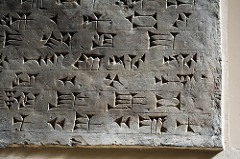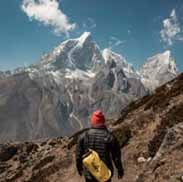AP World History Period 1 based on College Board Standards
Unlock all answers in this set
Unlock answersquestion
Paleolithic Era (1.1)
answer
Old Stone Age
question
Describe the Stone Age (1.1)
answer
>During this time, human communities took shape but remained at a relatively low level of social and technological development >The principal form of social organization was kinship-based hunting and foraging
question
Describe Hunting-Foraging Societies (1.1)
answer
These societies were usually composed of small kinship groups that were nomadic and often self-sufficient. Typically, males hunted wild animals while females foraged for wild plants, such as nuts, vegetables, and fruits. Hunter-foragers moved from place to place to follow the migrations of wild game and locate better places to forage. Usually, they lived in temporary dwellings and had few possesions, making movement easier. However, hunter-foragers did develop tools that helped them adapt to different environments. People generally lived this way before 10,000 B.C.E.
question
Describe migration trends and flow during the Paleolithic Era (1.1)
answer
> Archeological evidence indicates that during the Paleolithic era, hunting-foraging bands of humans gradually migrated from their origin in East Africa to Eurasia, Australia, and the Americas, adapting their technology and cultures to new climate regions.
question
Adaptation during Paleolithic era (1.1)
answer
>Humans developed a wider range of tools specially adapted to different environments from tropics to tundra. >Stone tool technology
question
What ways did humans use fire in new ways in the Paleolithic era? (1.1)
answer
>to aid hunting and foraging, to protect against predators, and to adapt to cold environments
question
Describe the economic and social structures during the Paleolithic era (1.1)
answer
>Economic structures focused on small kinship groups of hunting- foraging bands that could make what they needed to survive. However, not all groups were self-sufficient; they exchanged people, ideas, and goods. >Relatively egalitarian (equality)
question
Patriarchy during Paleolithic Era
answer
>There was not much patriarchy during the Paleolithic Era >They were hunter-gatherer societies >Men typically hunted animals and megafauna while women typically gathered things such as fruits and nuts >They relied on each other
question
What did the Neolithic Revolution lead to?
answer
> the development of new and more complex economic and social systems
question
Effect of Climate Change on Neolithic Revolution
answer
>Possibly as a response to climatic change, permanent agricultural villages emerged first in the lands of the eastern Mediterranean. (CB) >Agriculture emerged at different times in Mesopotamia, the Nile River Valley and Sub-Saharan Africa, the Indus River Valley, the Yellow River or Huang He Valley, Papua New Guinea, Mesoamerica, and the Andes. (CB)
question
Pastoralism
answer
>What:a human society that depends on domesticated animals rather than plants as their main source of food >Where: they lead their animals to seasonal grazing grounds & they did not have permanent settlements in 1 location >Pastoralism developed at various sites in the grasslands of Afro- Eurasia. (CB)
question
Domestication during Neolithic Era
answer
>What: the taming & changing of nature to benefit human kind >Significance: created mutual dependence between humans & plants & animals >Different crops or animals were domesticated in the various core regions, depending on available local flora and fauna.
question
Agricultural Communities during Neolithic Era
answer
>Agricultural communities had to work cooperatively to clear land and create the water control systems needed for crop production.
question
Environmental Impact During Neolithic Era
answer
> Agricultural practices drastically impacted environmental diversity. Pastoralists also affected the environment by grazing large numbers of animals on fragile grasslands, leading to erosion when overgrazed.
question
Population Increase during Neolithic Era
answer
>Pastoralism and agriculture led to more reliable and abundant food supplies, which increased the population.
question
Effects of Agriculture on Social Classes/Jobs
answer
>Surpluses of food and other goods led to specialization of labor, including new classes of artisans and warriors, and the development of elites.
question
Effects of Technological Innovation Neolithic Era
answer
>Technological innovations led to improvements in agricultural production, trade, and transportation
question
Examples of technological innovation during Neolithic Era
answer
>Pottery >Plows >Woven textiles >Metallurgy >Wheel based vehicles
question
Social Hierarchy
answer
>In both pastoralist and agrarian societies, elite groups accumulated wealth, creating more hierarchical social structures and promoting patriarchal forms of social organization.
question
Common Characteristics of Civilizations
answer
>An economic system >A government >A social system >A moral or ethical belief system
question
Identify the location of all of the required examples of core and foundational civilizations (1.3)
answer
• Mesopotamia in the Tigris and Euphrates River Valleys • Egypt in the Nile River Valley • Mohenjo-Daro and Harappa in the Indus River Valley • Shang in the Yellow River or Huang He Valley • Olmecs in Mesoamerica • Chavín in Andean South America
question
States and Expansion
answer
>States were powerful new systems of rule that mobilized surplus labor and resources over large areas. >Early states were often led by a ruler whose source of power was believed to be divine or had divine support and/or who was supported by the military. >As states grew and competed for land and resources, the more favorably situated — including the Hittites, who had access to iron — had greater access to resources, produced more surplus food, and experienced growing populations. These states were able to undertake territorial expansion and conquer surrounding states.
question
Examples of Early regions with state expansion and/or empire building
answer
>Mesopotamia >Babylonia >Nile Valley
question
Pastoralists were often the developers and disseminators of new weapons and modes of transportation that transformed warfare in agrarian civilizations.
answer
>New weapons: Compound bows and Iron Weapons >New modes of Transportation: Chariots and horseback riding
question
The accumulation of wealth in settled communities spurred warfare between communities and/or with pastoralists; this violence drove the development of new technologies of war and urban defense.
answer
>Hittites came to rule much of Mesopotamia and brought with them new technology >Hittites Notable for being among the first to systematically use iron weapons >The Assyrians were armed with iron weapons and made good use of horseback warfare
question
Mesopotamia Social
answer
>Sumerians first to devise a written lang: CUNEIFORM >Mesopotamians were skilled builders and craftspeople >Accomplished at pottery and METALLURGY (the extraction and mixing of metals and making of useful objects) >Developed high level of math knowledge > Originated the BASE-60 NUMBER SYSTEM: used to measure time and navigational circulations
question
Mesopotamia Political
answer
>First civilization emerged among the Sumerians, next were the Babylonians, then the Assyrians >Mesopotamian people built many cities, like Babylon >HAMMURABI'S LAW CODE (one of oldest law codes, Babylonian king Hammurabi in 1750 B.C.E, quite harsh, favored elite over lower classes, idea that society should be governed by set of regulations) ;Cities tended to be governed by kinglike figures supported by a small ruling class of priests
question
Mesopotamia Human-Environment Interaction
answer
;Built Canals and Dams ;Environmental Degredation ;"Land between waters" ;Fertile Crescent: Tigris and Euphrates
question
Mesopotamia Culture
answer
;Sumerian poems gave rise around 2000 B.C.E. to the EPIC OF GILGAMESH, one of humanity's oldest literary works >Honored polytheistic gods with ZIGGURATS (terrace-stepped temples)
question
Mesopotamia Economics
answer
>Traded widely throughout the Middle East and North Africa >MESOPOTAMIAN-INDUS TRADE: involved boat travel along the Indian coastline, with the Mesopotamians exchanging wool, barley, and copper for gems and cotton
question
Egypt Political
answer
>
question
Early civilizations developed monumental architecture and urban planning.
answer
>Tombs like Egyptian Pyramids >Temples such as Mesopotamia's Ziggurats ;City walls, paved streets and roads, and sewage and water systems found in Mohenjo-Daro and Harrappa ;Palace of Babylon ;Platformed mounds built by Olmecs
question
Elites, both political and religious, promoted arts and artisanship.
answer
;Elaborate textiles of Chavin ;Purple cloth dyed by the Phoenicians ;Winged bulls carved to decorate the walls and guard the gates of Assyrian palaces
question
Systems of record keeping arose independently in all early civilizations and subsequently were diffused.

answer
;The earliest approach to writing was to use symbols mainly to represent concepts and objects ;Cuneiform, invented by the Sumerians in which wedge-shaped characters were pressed into clay tablets ;Egyptian hieroglyphics ;Chinese pictographs ;Phoenicians created Alphabet, which represented sounds and allowed the formation of any word from a small set of easily memorized symbols ;In the Andes, no form of writing emerged until after Spain's conquest of the Incas in 1500CE and instead there was the quipu >Quipu is form of record keeping in which Information was represented by knots tied in strings, with extra meaning aded by color combinations
question
States developed legal codes, including the Code of Hammurabi, that reflected existing hierarchies and facilitated the rule of governments over people.
answer
>CODE OF HAMMURABI - one of oldest law codes, Babylonian king Hammurabi in 1750 B.C.E, quite harsh, favored elite over lower classes, idea that society should be governed by set of regulations
question
New religious beliefs developed in this period continued to have strong influences in later periods.
answer
>VEDIIC RELIGION- polytheistic, brought to India by Indo-European Invaders, Rig Veda, set into place a rigid caste system later adopted by Hinduism, all creatures possessed a soul that would be reunited with Brahman, placed great emphasis on Brahmin class and dozens of gods they performed rituals to, accepting one's lot in life (religion justifying social hierarchy) ;HEBREW MONOTHEISM- evolved into Judaism, first monotheistic faith, hebrews, Abraham, Israel, Ten Commandments, Torah, Jerusalem ;ZOROASTRIANISM- Founder is Zoroaster, Iran, Scripture is the Avesta, Emerged as a faith in Persia when it was adopted by Darius the Great to justify his rule as king of kings, monotheistic, single god: Ahura Mazda (world's creator and wise lord), cosmic struggle against evil, End time of judgement
question
Trade expanded throughout this period from local to regional and transregional, with civilizations exchanging goods, cultural ideas, and technology.
answer
EGYPTIAN-NUBIAN TRADE: brought gold to Egypt and gave it access to ivory, ebony, and exotic animal skins from Sub-Saharan Africa; crucial trade network but rarely friendly; Egypt raided Nubia for slaves, built border forts to regulate commerce, and conquered Nubia MESOPOTAMIAN-INDUS TRADE: involved boat travel along the Indian coastline, with the Mesopotamians exchanging wool, barley, and copper for gems and cotton
question
Social and gender hierarchies intensified as states expanded and cities multiplied.
answer
>As populations grew, competition for surplus resources, especially food, led to greater social stratification and job specialization >Certain roles, such as political, military, and religious leadership, were more powerful or more valued than others and mostly men did those jobs which gave way to social stratification and patriarchy >HIERARCHY is a culture's ranking of social classes
question
Literature was also a reflection of culture
answer
"THE EPIC OF GILGAMESH": Mesopotamian Culture, based on Sumerian poems, fictionalized account of a real king from the city-state of Uruk. An oppressor of his people, Gilgamesh is sent by the gods on a series of quests to atone for his wrongdoing. He searches for the secret of immortality and eventually gains wisdom. RIG VEDA: a collection of Vedic hymns composed in Sanskrit, one of the world's oldest Indo-European and one of the earliest Hindu sacred texts BOOK OF THE DEAD: describes the judgement of souls after death and advises readers on how to endure a happy afterlife. This involves not just good behavior but the proper mummification and entombment of one's remains
question
What technologies facilitated the Indo-European Migrations?
answer
Light chariots and iron



